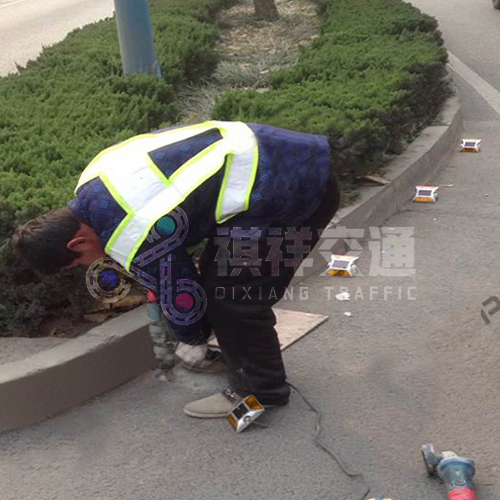Solar road studs are a revolutionary sustainable solution that improves road safety and visibility. These small innovative devices are installed on roads to provide guidance and warnings to drivers, especially in low light, rainy, or foggy conditions. They are powered by solar energy and are both environmentally friendly and cost-effective. In this article, we will discuss how to install solar road studs on the road, covering the necessary steps and considerations for a successful installation.
1. Choose the right location
Before installing solar road studs, it is important to determine the best placement location. This involves a comprehensive assessment of road conditions, including traffic flow, speed limits, and visibility requirements. It is critical to identify areas of poor visibility, such as sharp turns, crosswalks, or areas prone to fog and low-light conditions.
2. Prepare the installation site
Once you have determined the ideal location for your solar spikes, the next step is to prepare the installation site. This includes cleaning and clearing the area to ensure a smooth and even installation surface. It is important to remove any debris, dirt, or existing road markings to provide a clean, safe foundation for the solar poles.
3. Consider the orientation of your solar panels
When installing solar road studs, the orientation of the solar panels must be considered to obtain maximum sunlight exposure. Solar panels should be positioned to receive direct sunlight throughout the day, ensuring optimal charging and performance of the solar studs. This may require adjusting the angle and position of the solar studs for optimal sunlight exposure.
4. Install solar road studs
The actual installation of solar road studs involves securing the device to the road surface. This can be done using epoxy adhesive or by drilling holes into the road and anchoring the studs. It is important to ensure that solar studs are securely fastened to withstand heavy traffic and harsh weather conditions. Additionally, the correct alignment and spacing of solar studs are critical for effective visibility and guidance of drivers.
5. Test the solar studs
After installation, the solar road studs must be tested to ensure they are working properly. This includes checking the brightness of the LED lights and the effectiveness of the reflective properties of the studs. It is also important to verify that the solar panels are effectively charging the batteries, providing enough power for the solar studs to operate throughout the night.
6. Maintenance and monitoring
Once solar spikes are installed and operational, it is important to have a regular maintenance and monitoring plan in place. This includes routine inspections to check for any damage or faults, as well as cleaning the solar panels to ensure maximum sunlight exposure. It is also important to monitor battery life and replace batteries as needed to maintain the optimal performance of your solar studs.
In summary
Installing solar road studs plays a vital role in improving road safety and visibility. By following the necessary installation steps and precautions, road authorities can effectively improve driver guidance and warning systems, especially in low light and adverse weather conditions. With the benefits of solar energy and sustainable technology, solar road studs are a valuable investment in promoting a safer and more efficient road network.
If you are interested in solar road studs, welcome to contact Qixiang to get a quote.
Post time: Dec-08-2023







